Toothless Lionesses
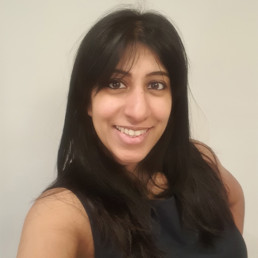
Written by Bhamika Bhudia
English teacher and lead teacher in a mixed comprehensive secondary school in North-West London. She tweets as MissMika_Eng
Does the “aggressive” Woman of Colour trope lead to a generation of toothless lionesses?
Women of colour have to navigate the western world with careful footing. Sidelined and stereotyped within the media and underrepresented at leadership tables, conducting herself in offices, classrooms and meetings is a difficult, political affair. Managing standing up for herself, being heard, demanding a seat at the table all the while not being deemed too aggressive, requires strategizing but at what cost? Surely this lack of freedom to express herself honestly and fully has detrimental effects on her confidence, self worth and identity as a whole?
In my quest to make my workplace and environment a more celebratory and inclusive place, I have had to take a real look inwards at my role as a woman of colour (a term I am still uncomfortable with), and I have had a rude awakening!
I have always considered myself (and I think have been considered) to be a confident woman. I am able to stand up for what I believe in, I have carved myself a seat at the table and my voice is one that is heard. But as policies are put into practice and ideologies around celebrating culture and acknowledging diversity are being discussed at that very table, I have come to question how many waves I actually make, how often I quietly avoid a stir and how many self-sabotory behaviours I demonstrate.
Diversity-hire:
According to the School Workforce Consensus (2019) only, 6.2% of assistant heads and deputies are from ethnic minorities and while women comprise 67% of the country’s headteachers, a mere 3.9% of them identify as non-white. The statistics speak for themselves, yet despite knowing this, every job and promotion I have ever gotten has been followed by inner doubt questioning whether I was a diversity hire. The odds are clearly stacked against me, but this toxic imposter syndrome based solely on my demographic is obviously very damaging. And it can’t be just me – I didn’t invent this notion or phrasing, it has to come from somewhere. I am very doubtful that I am the only one who has felt this way yet my achievements are continually downplayed in my mind because I happen to fit this box that ironically enough, isn’t actually getting filled in the real world!
Say my name!
It is now widely acknowledged that continual mispronunciation of people’s names is a microaggression and is damaging. Spending my entire life as Bhamika Bhudia has been tricky. I have always expected people not to get my name right to begin with – it’s an unusual name – and I take absolutely no offense when people don’t get it right away. I have been quick to correct them, the first, second and third time but after that, I drop it. I have worked with people for years that have continued to call me by some other moniker. Until this last year, I have let these aggressions slide for fear of being rude, making things awkward or making other people feel bad. It is not ok, and should not have taken me 37 years of life to realise this. It is my duty as a role model for children to address this but for my entire life, I have placed the feelings or others ahead of my own; clearly I did not feel my name was worthy enough of causing a stir.
Bite your lip:
On the same note, causing that stir is a real predicament for those in my demographic in far more contentious circumstances than pronunciations. I have heard many a story of meetings, conflicts and general grievances of women who look like me, shut down because they were deemed too “aggressive”. Conducting myself in sensitive circumstances is a tight-rope I tread very carefully on. I always say, with a strong hint or irony and an even stronger note of bitterness, that my life would be so much easier if I was a cryer. If, when it came to conflict, I was the sensitive one who could alleviate circumstances and even shift responsibility by showing my emotions and expressing my hurt/offense in a more “feminine” way. Now I’m not saying all tears are manipulatory nor am I condoning toxic femininity but there have been times and continue to be so where I am unable to express my offense at derogatory comments or behaviours towards me, no matter how professionally or politely I handle them, for fear of becoming the aggressor. I have bitten my lip, publicly and privately because when it comes down to it, I am afraid that I will be blamed for upsetting the other person despite being the offended party. I always assumed it was a “me” thing, perhaps even a “female” thing, but once again, this reflection has led me to connect the dots. Women of colour being branded and dismissed as “aggressive” is a historical thing; it does not stop at me nor did it begin there.
This post has been very difficult to write. I have taken a look at myself and honestly I do not like what I see. I thought I was strong, I thought I was a good role model and discovering that I am far from that has been a difficult discovery indeed. But now I have seen that despite my “aggressive” nature, I am still doing myself and every woman of colour after me, a huge disservice by bowing down, and sitting quietly. My teeth may have been blunted up until now, but at the risk of ending with a huge cliche, I will make sure my lioness comes out in full force, not only for myself but also for those I model my behaviour for.
Attention Policymakers: We Need to Update the School Curriculum
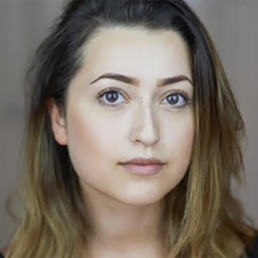
Written by Naida Allen
Naida is a writer and blogger, fuelled by coffee and dark humour. She is a mental health advocate and regularly uses her own experiences to raise awareness about social issues. Her aim is to break stigma around taboo topics and enlighten the masses through the art of words. She loves dogs, and hates the patriarchy.
Given the significant impact of the Black Lives Matter movement on the criminal justice system, it’s only natural for this event to trickle into the education system. The British school curriculum is outdated at best. It will come as no shock to know that 85% of secondary school texts studied were written by White authors. The lack of diversity is damaging both socially and educationally. The year is 2021, and we are still waiting for change.
After the murder of George Floyd, the world woke up. We could no longer stay silent; the time to take action had arrived. Amongst many deep-rooted racist issues that still exist in British society, one that became impossible to ignore was the issue with the school curriculum. Secondary school pupils across the country (and the world for that matter) are not taught the truth about the UK’s shady history. The broad lack of diversity exists across all school subjects, from English and Drama to History and Science.
Even the American K-12 curriculum lacks punch. The Coalition of Educational Justice (CEJ) in New York recently published a shocking set of statistics that puts the school curriculum to shame. Their enquiry into the lack of diversity found that 4 out of 5 books studied in English were written by a White person. Similarly, a national UK study by Penguin Books found that less than 1% of GCSE students studied a book by a writer of colour.
It goes without mentioning that it is not just Black authors and people of colour who are marginalized. No; it is also women — and worse still — Black women who are frozen out. There is rarely a platform for LGBTQ+ authors, or awareness in their struggles, which adds to the exclusion and creation of ‘otherness’.
Yet it has to be a top-down approach for us to succeed in any social change. The current school curriculum contributes to perverse attempts to sugarcoat the past, allowing White people to hold the monopoly of power. Gestures that arguably verge on tokenistic, like “Black History Month” are the bare minimum. They are designed to keep the peace, but are ultimately just performative in nature. As Jean Alexander states, “it is a game play for the survival of a democratic society”.
My message today is to the policymakers: we need to update the school curriculum. If history, implicit and institutional racism, or celebrating Black achievements are not prioritised in schools, we can assume change still sits on the backburner. Young people will only learn when we own up to our mistakes. For there to be any hope in a harmonious society, we need to right our wrongs as best we can. The optimum approach is an authentic one.
So, teach students about Britain’s role in colonialism. Explain why the prison population is overrepresented by Black people and ethnic minorities. Study fiction and non-fiction texts across all subjects written by non-white authors. Take English as an example; whilst Shakespeare is undoubtedly important for the development of language, Zora Neale Hurston’s Their Eyes Were Watching God remains underrepresented. Consider adding Zadie Smith and Reni-Eddo Lodge to the English syllabus. This will by no means erase centuries of oppression; it will, however, inspire development.
The fact of the matter is, these texts are not hard to come by. There is a long list of potential contenders written by Black women, from textbooks and fictional narratives to plays; and they are all critically-acclaimed. Why, then, are we not capitalising on this opportunity? There is no better way to teach students about human rights and social justice than directly from the horse’s mouth.
An example of where this sincerity has worked is in Germany; their school curriculum shows significantly more willingness to revisit and admit to past mistakes. Teachers will openly discuss the German role in the Holocaust and WW2; many students will at some point visit a concentration camp. At no point do they attempt to disguise their atrocities. In doing so, they are now more respected by other nations. This is how to rewrite the future.
The irony is, British schools are the first to slander Nazi Germany for their war crimes, particularly when it comes to the Holocaust. Where is this zealous attitude when documenting our own actions on the History syllabus, for example, as colonialists? Instead, students learn about what makes Britain so Great. We share how we were the first to abolish slavery, but not that explorer, John Hawkins, was the first to start the slave trade in 1562.
Reform starts in school. We cannot expect the youth of today to differ from our predecessors if we do not light the torch. For students to thrive, they need to be represented in all their diversity. It is simply not good enough for only 0.1% of pupils to study a text by a Black female author. When you do not see yourself represented, your dreams and options are extremely limited. This is what inevitably leads to apathy and missed opportunities in the community.
We need to mention the achievements and discoveries of both people of colour and Black people – scientists, mathematicians, poets, historians. For example: Madam C.J. Walker who created the first African-American hair care products; Elijah McCoy who invented the ironing board; Tu Youyou who discovered artemisinin, the treatment for malaria.
At the very least, we need to incorporate texts written by minority authors to study in the classroom. It’s important to keep current and move with the times, rather than promote a false representation of the “good old days”.
Let’s inspire all students — regardless of their gender, race, or sexuality — to know their worth. Britain as a whole needs to understand their history and address their ignorance. The only way to do any of this is through policy change; otherwise we remain stuck in bad habits. It is time to update the school curriculum.
This is not a plea. It is an order.
Unlocking Identity for the 21st Century - Building Identity Literacy with Children

Written by Chikara Shimasaki and Bruce White
Chikara Shimasaki: Project Development Officer at OICD. Former primary school teacher, vagabond permaculturalist, part-time pizza oven master.
Bruce White: Anthropologist. A consultant to international NGOs. A Founding Director of the OICD. Former Dean at Doshisha University Kyoto, and an honorary research fellow at University College London's Department of Anthropology.
Mass displacement and migration due to climate change, resource wars and sea-level rise are now near certainty, meaning that many communities will likely experience a greater influx of ethnic, religious, linguistic and cultural diversity.
Political polarization, racial, ethnic and religious disharmony and conflict already characterise the nature of community life for increasing numbers of people around the world. The potential for the problems in the global economy to exacerbate the large-scale migration we have seen over the last decade seems higher than ever.
How, then, can we prepare our communities and our children for an increasingly complex future? Can we resist and counteract division as fear is used to turn ordinary men and women against those that are seen as different? Can we equip children with the ability to resist propaganda disseminated through social media and the pressures of their peers, parents and manipulative influencers?
Can we give them the resilience needed to fulfil their potential and maximise their development? What can we do now to better prepare the next generation to cooperate and thrive in the rapidly changing world that is unfolding?
The Potential Power of Identity
One path forward is harnessing the latest understanding of how identities work – as a psychological and social system that helps to fulfil universal human needs and solve everyday problems. With increased identity literacy we can empower ourselves to self-actualise, build resilience and find freedom from self-concepts which lead to division.
Nobel Prize Laureate Amartya Sen, states that the richness of identity comes from the fact that “…the same person can be, without any contradiction, a Norwegian citizen, of Asian origin, with Bangladeshi ancestry, a Muslim, a socialist, a woman, a vegetarian, a jazz musician, a doctor, a poet, a feminist, a heterosexual, a believer in gay and lesbian rights”. This plurality means that identities can and should be entities that empower and liberate us to fulfil our potential and stimulate us to grow.
However, when this ‘state of plurality, of multiplicity and choice’ is diminished and restricted, we are only able to see ourselves in singular ways such as members of only one ethnic, religious or political group, diminishing the ability to meet our core human needs through many different expressions of identity.
For example, during terrorist or gang recruitment or in preparation for genocide, an individual’s identity options are gradually stripped away. The subject’s sense of who they are, where they come from, and who their enemy is is rewritten. A “depluralised” identity can convince people that they are divided from one another, severing their ability to feel an affinity with manufactured enemies and potentially turning these targets of manipulation into weapons capable of orchestrating terrible acts of violence.
With the ever-expanding reach of the internet and social media, these manipulations of identities are now easier and more scalable than ever before in human history. When compounded with the disruptive climatic and demographic trends we face, these technological vulnerabilities represent an existential threat to humanity as we know it.
Identity Literacy in Education
But there is hope. Schools and educators are in a powerful position to recognise and help solve this urgent problem. By identifying the risk of ‘identity depluralisation’ in each child as well as in the community in which the school serves, we can intervene effectively in the early stages. And we can do more than just safeguard and protect. All those involved with children can learn to empower them with the understanding and mastery of how their own identities function, in turn helping them to recognise and maintain flexible and diverse identities.
Helping children to build “Identity literacy” will allow children to better understand the deeper roots of their own and others’ behaviours, build empathy, and hone their skills to effectively resolve issues at their root. As a consequence, mastering identity not only allows more effective learning experiences to take place within and beyond the classroom, but also increases the resilience and actualisation of the child and, eventually, the wider community.
We believe that identity literacy must be integrated into our education as it is the foundation of our lived experience and a critical component in how we prepare for and thrive within the increasingly complex and diverse world of the 21st Century.
The Organisation for Identity and Cultural Development (OICD) has developed a program to help educators and schools incorporate identity literacy into their classrooms, policies and communities. The organisation offers schools the ability to conduct an ‘identity audit’, as well as train staff with a CPD course ‘Helping Children to be Identity Literate’.
For more information on the OICD’s work on Identity Literacy in Education and how it might be useful to your institution, contact Chikara Shimasaki at cshimasaki@oicd.net
Aspiring Heads Leadership Summit Conference 2021
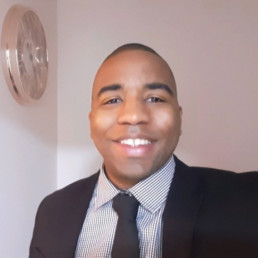
Written by Javay Welter
NPQ, MSc, Outstanding MFL teacher, public speaker, mentor and linguist.
On the 16th of October, I witnessed greatness. The Aspiring Heads Leadership Summit was phenomenal. Nadine and Ethan Bernard hosted a truly remarkable conference. Above all, this was the first leadership conference I had witnessed led by a current existing Black Headteacher, Nadine Bernard. Well done Nadine for your initiative, creating this platform and elevating future leaders. This was a pioneering conference, very timely and extremely forward-thinking.
The wide array of speakers in different fields provided a variety of perspectives and insights. Topics ranged from mentoring, strategic leadership to financial literacy. The speakers were all leaders and thought leaders in their respective fields. They shared their journey, resilience and barriers they had to overcome. The optional workshops were uplifting, insightful and edifying. I left feeling empowered, inspired and acquired so much wisdom.
The first keynote speaker Bose Onaboye, who is a business strategist and leader, spoke about finding your leadership style and being highly reflective. Leadership development is a process. She encapsulated that leadership is a journey and not a destination. Leaders are readers. Therefore, one must strive to keep developing oneself and undertake CPDs. I fully agree that leading is a journey, not just a title. We must strive for excellence.
Another charismatic speaker Karl Pupé, an educator and author, highlighted that we must step out of our comfort zone to grow. Leadership is not easy and we must embrace change to grow. We must embrace more black leaders in all walks of life and value their unique and valuable skill sets and contributions. He mentioned that his various previous jobs have helped to strengthen his behaviour management, for example, negotiation, conflict resolution and dealing with challenging behaviour. His book Action Hero Teacher: Classroom Management Made Simple is an exemplary book on behaviour management. A must-read for new teachers.
Diana Osagie, a former black Headteacher and CEO of Courageous Leadership focused on being a human first and a leader second. Well-being is key to longevity. If you do not have health, you cannot lead. Sayce Holmes Lewis, Founder and CEO of Mentivity advocated that we need more servant leaders rather than being ego-centric ones to promote positive change. We need to lead from the back like Nelson Mandela. Sayce passionately highlighted that positive black male role models are crucial and that Devon Hanson, a former black Headteacher acted as an inspiration. Lavinya Stennett, founder and CEO of the Black Curriculum pointed out that Black History should be incorporated in the national curriculum and that representation is vital to success.
The second keynote speaker, Dr Leroy Logan MBE who is a former Metropolitan Police superintendent. He was also the chair of the National Black Police Association and discussed fear. He eloquently commented that his father feared his career choice. His father suffered police brutality. However, he had seen black role models and police officers in Jamaica which inspired him and it was his calling. Leroy emphasised that he entered the police profession to make a positive contribution and to help change the Met. His book ‘Closing Ranks’ shares his incredible journey from humble beginnings to becoming one the first black police superintendent in the UK. Leroy faced many adversities, barriers and did not give up. Importantly, he had a dream just like Dr Martin Luther King Jr.
In conclusion, representation matters. Young pupils deserve a diverse education, inspiration and representation. Fundamentally, it is pivotal that they see leaders from diverse backgrounds to prepare them for the world of work. I believe that it would be beneficial to have more black and global majority leaders like Nadine Bernard leading conferences to elevate future generations and make a difference. Nadine has started a legacy. The next step is a follow-up conference.
Refugee Cafe’s first training programme
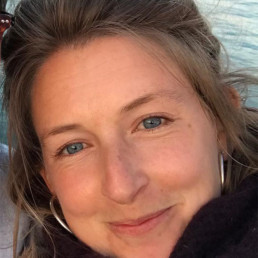
Written by Rose Bewick
Rose is the training coordinator at Refugee Cafe. She has previously worked for the British Red Cross on the Syrian Resettlement Program, and is soon to complete a masters in Refugee Protection and Forced Migration from the University of London.
Our mission at Refugee Cafe is to use the power of food to support local refugees and migrants into employment. So, we are extremely excited to be launching our very first training program, aimed at empowering refugees and migrants with a background in hospitality to find work in this industry.
Refugees and vulnerable migrants are disproportionately represented in the UK’s unemployment figures. They often face multiple barriers to accessing work, including limited English language skills and a lack of UK work experience. At a time when food businesses are crying out for staff, this is the perfect moment to start bridging some of the gaps which keep refugees and migrants excluded from mainstream employment in this sector. By equipping them with the skills and knowledge they need to find work in the UK’s culinary industry, this course aims to help refugees and vulnerable migrants get back on their feet, regain their independence and work towards building a future for themselves and their families in the UK, by accessing mainstream employment.
Through a combination of theoretical classes and practical placements, this course will address some of the most significant barriers that refugees and migrants face when it comes to finding work in the food and hospitality industry. Classes will cover basic food hygiene and Covid measures, training in understanding budgeting and stock management, teamwork and communication skills, and more. The course will incorporate peer support coaching and communications workshops, and trainees will have the opportunity to learn from and connect with other refugees who have already found work in this industry. Trainees will also be supported to write CVs and apply for jobs, as well as learning what it takes to run a food business in the UK. The course is an opportunity for refugees to gain foundational knowledge of the UK food industry, UK work experience, Level 2 Food Safety and Hygiene qualification and professional references. They will also receive one to one help to work towards their long-term employment goals.
With a background in hospitality management, a love of great food, and a big belief in the power of the hospitality sector as a force for empowerment and community cohesion, I am so excited to work with refugees and migrants who care about hospitality and have a passion for food.
This is an eight-week, part time course, based in Lewisham. Classes will run on Monday and Tuesday mornings, with four 3-hour placements over the duration of the course. Our first course will run in November (exact dates to be confirmed), but we accept rolling applications.
If you, or anyone you know, is interested in becoming a trainee, please do get in touch to apply or ask questions. You can contact me (Rose) at rose@refugeecafe.org.uk or 07306413599
Audit Your Curriculum for Gender and LGBTQ+ Inclusivity

Written by Katherine Fowler
Katherine Fowler is a specialist content editor at The Key, a provider of up-to-the-minute sector intelligence and resources that empower education leaders with the knowledge to act.
Committing to improving diversity across your school’s curriculum is a big task, but it’s also a really important one. You’ll know that lasting change isn’t created by talking about gender and sexuality in a few PSHE or RSE lessons, but by really taking time to embed inclusivity throughout your curriculum. So how can you do this?
- Ask questions of your current curriculum. In particular, look for weaknesses or gaps in each subject and consider how you can fill these with inclusive materials (such as books written by female authors, or LGBTQ+ STEM role models). Specialist audit tools are available to help you spot these gaps and make changes, such as The Key’s LGBTQ+ and gender curriculum audit tool.
- Always take a moment to think about intersectionality. While you’re focusing on your representation of women and LGBTQ+ in your curriculum, it can be easy to slip into defaulting to, for example, white, able-bodied examples. Try to balance your examples to include women and LGBTQ+ people of colour, and of different abilities and body types.
- Encourage staff to educate themselves. If your staff don’t understand the importance of doing this sort of curriculum review, you’re not going to achieve lasting change. Ideally, you’d want to spend time with all your staff, but, if time and resources are tight, at least make sure the staff who are going to take the lead on the audit are aware of current issues surrounding gender and sexuality. There’s a host of reading material, podcasts, documentaries and TV shows that cover these topics – signpost some to your staff, and make sure they are given an opportunity to discuss their thoughts and feelings (for example, in a dedicated staff meeting).
- Create a cross-curricular working group to take the lead. As already mentioned, committing to this curriculum review is a large task, and shouldn’t be put on the shoulders of one or two people. Get a group of staff together to work on this instead. As a minimum, you’d want to involve:
- The subject leader/co-ordinator for each subject
- PSHE/RSE leads, who will be most familiar with the content of this audit
- Any other members of staff who show interest in the work (these don’t have to be teachers – passion is what’s key!)
Even though different members of the group will be focused on different parts of your curriculum, the kinds of questions in an audit and their overall aims should be aligned, so encourage them to work together and support each other.
Useful documents to review include:
- Curriculum maps
- Short and long-term plans
- Individual lesson plans and resources
The working group should also take into account cross-curricular events/days, trips and assemblies.
Get the working group to meet regularly and review progress. This also lets the group share ideas and resources. Aim for a meeting at least once a term, but half-termly would be ideal.
- Involve the wider community. Consider running an INSET or CPD session for all staff to kick-off the curriculum review, to encourage interest and participation. All staff should feel able to feed in suggestions or ideas of what needs to improve via their subject leader.
Parents and pupils should also know that you’re carrying out this audit and be able to share their thoughts and ideas.
Your governors should know you’re doing this, too, especially any curriculum link governors. Give them the opportunity to get involved in the working group if they’re keen!
- Be prepared for this to take time. A full review could take up to a year, and will never truly be ‘finished’ – your working group should continue to meet, review and look for more ways to adapt and refine the curriculum. Encourage this by making sure the group has protected time, such as INSET days and staff meetings, to dedicate to the work. Consider adding the audit to your school improvement plan, so the work gets tracked and resources can be considered at the start.
- Go beyond your curriculum, too. If you want a truly inclusive environment, you’ll need to think about the ethos and culture that surrounds your curriculum. Consider whether you can improve inclusivity in the following areas:
- Staff hiring and training
- The school environment (e.g. displays, shared spaces such as the library)
- Policies (e.g. anti-bullying policy, behaviour policy and child protection policy)
- Meeting your requirements under the Public Sector Equality Duty (PSED)
- The language used across your school (Stonewall’s primary curriculum contains useful glossaries for pupils and staff)
- Your school’s involvement and engagement with your wider community
How can we raise anti-racist leaders?
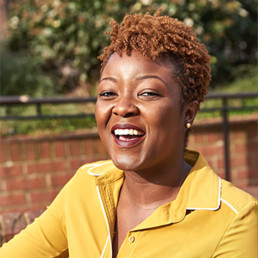
Written by Ayo Awotona
Ayo Awotona specializes in confidence building for girls in education. She does this through programs, workshops, and keynote speeches.
When it comes to speaking about race, white privilege, and colorism; things can often get a tad bit uncomfortable or even awkward, to say the least.
This is understandable. More often than not, these are difficult conversations for most people, and difficult conversations are often characterized by emotions such as fear, anger, frustration, conflict, and other strong dividing — not unifying — emotions. These emotions are often suppressed and can be released rather strongly.
Why is this?
It’s because emotions can run high on both sides, and there is room for the conversation to become quite heated on either or both sides.
This is just one perspective as to why uncomfortable conversations are hard.
So I hope that takes some pressure off of you depending on your curiosity as you first read the title to this blog post 🙂
So let’s dive into this simple (yet, rather complex) question.
How can we raise anti-racist leaders? That is, how can we empower our young people in the world today to make a change by first recognizing racism and challenging it in this seemingly never-ending cycle of systemic oppression?
Before I continue, I must add here that this question is not thrown out to one particular race. This is a question that’s being thrown to each and every one of us reading this (yes! Even me as a Black-British Nigerian woman), because the reality is… change starts with every single one of us. All races and denominations. Change looks different on each and every one of us – rather than a one-size-fits-all approach.
To kick us off with answering this question, it’s important for us to acknowledge/be reminded that children are not colorblind. Children are very much aware of racial differences.
Permit me to simplify how young children learn about race to:
- what they see (both directly and indirectly),
- what they hear, and;
- what they are taught (both at home and in school).
This is really encouraging because it means we (as educators and leaders) play a big role in positively influencing the trajectory of their lives.
Now let’s talk about developing an anti-racism strategy for our young people.
There are different ways to make a change so I’ll give 3 examples of practical things that can be done to help raise anti-racist leaders.
Behavioural Change
As leaders, we ought to know and lead ourselves before we lead others. This means we essentially can’t give what we don’t have. Here are some tips for being intentional about our own growth:
- Listen to other perspectives and de-center yourself
- Boost the voices of the marginalized
- Educate yourself
- Acknowledge your own privilege and propensity for unconscious bias
- Challenge discrimination, even when you feel scared
- Keep the conversation going
Raising Awareness
Sometimes, one of the most powerful things we can offer young people is awareness. This is where we’re focusing their attention on a cause or issue in the world (in this case, related to race). The objective is to increase their understanding – but of course, we must be in a position where we are practicing this ourselves.
Action Planning
A great way to empower young people to take charge of their own learning is through projects – whether this is through achieving tangible or intangible objectives. Action planning activities are designed to support students to build the necessary skills for work and life, as active local and global citizens.
So what could this look like?
Running a workshop where students come up with a project idea to take action on!
During the workshop and overall project duration, it’s important that we support students with their ideas, but steer them in the direction of what is realistic. It is important not to stamp out their creativity, but equally important to ensure students have a clear understanding of how their action plan can be S.M.A.R.T. (Specific. Measurable. Attainable. Relevant. Time-bound)
Some suggested questions to guide your students are:
- What issues do you see happening in your local community that make you upset/angry/you would like to change?
- What issues do you know of happening in your global community? Have you read or seen anything in the news recently?
- If you could change one thing in your local/global community, what would it be?
I strongly believe that for us to move in the right direction of raising anti-racist leaders, change starts with both you and me.
My name is Ayo, Ayo Awotona.
Let’s keep the conversation ALIVE!
The Psychology of Our Quarrels
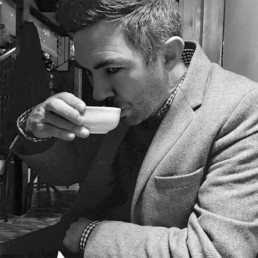
Written by Russell Ridgeway
Russell Ridgeway is an American writer based in Budapest, Hungary. He writes in business, tech, and fashion as well as creative fiction. You can reach him by email (russell@lensawork.com), or on LinkedIn and other social media platforms.
Quarrels do happen in our everyday relationships, with our family members, significant others, co-workers, and friends. Is it normal to have them regularly? What can we do about them? Do they have to be ongoing, or are there specific ways to reduce their frequency and intensity? Let’s take a closer look at this actual and significant topic, and find solutions that could work.
There are those types of people who avoid conflicts in contact, sometimes both parties. In other relationships, one person tends to fight more than the other, or the people keep changing roles. And it is becoming a pattern, which they cannot handle well, as the people involved are not sure what to do. No wonder why; we lack this kind of education!
How Quarrels Work
By observing, analyzing, and coming up with solutions to your quarrels, you can make your life better. Doesn’t matter who you usually fight with. This is what you, or more ideally, both of you should be doing. Realize that each of these scenarios has a starting point, a major phase with intense emotions, and a closing point. Why is this crucial to observe?
By doing so you can see some interesting patterns. Be it a relationship between married couples, parents and children, siblings, or co-workers, it always happens similarly! If you observe them, you can realize that there are only a few typical scenarios that keep repeating themselves. When the two (or more) of you start with the same words, actions, or things!!
Think of the analogy of a cup. Your cup is your relationship. When you fill into it a bit of a quarrel at times, it becomes fuller and fuller until it reaches its full capacity. That’s also the point when your relationship can’t take more at any one time, so it blows up!
How Do We Fight
You should take a piece of paper, and write down the following:
- How do you usually start fighting?
- What do you say to each other?
- How do you both feel?
List two of the most common types of your quarrels. Try looking at yourselves like someone neutral, an outsider. Remember, you don’t have to be one with your fight! Key points to consider: In what kinds of situations do they come up? How do we usually behave? What is the other saying that triggers us? How do we both react to each other?
Look for those situations in which these fights appear. Observe both of your moods consciously. Were you already under pressure because of other things? Were you tired? Did you sleep enough? Were you adding fuel to the fire just because the other person also hurt you? Did you try to consciously stop fighting, hurting the other’s feelings, or come to a solution?
You Are in Control
Did you allow the fight to take the best of you, feeling you are powerless? We often give away our power to the fight, when we should aim to do the opposite: disallow it to become ugly in the very beginning. Before expressing your pain, and thus hurting the other person, ask yourself to take it easy. Say to yourself, I am in control, not my pain. You should aim not to hurt the other.
Start to take control the earliest possible, before the quarrel gets big! This is the best way to alter its outcome to what you want it to be. Many times, what we say to the other person isn’t as hurtful as how we say it. When this happens, remember, that this won’t make your contact better and surely doesn’t lead to your desired outcome! When you start observing it, you are in control!
Fighting is like being in trance, we tend to lose our conscious behavior. Our survival mechanisms are turning on, switching off our intellect. So, what you need to do is, get yourself out of this state! Start moving if you were sitting earlier, go out into the fresh air, take some deep breaths, wash your face… Do the same with your feelings, switch them to positive ones! Remember who is the boss!!
Quarrels and fights are inevitable. Like it or not, they are a natural part of each human connection. Therefore, your aim should be to avoid them as much as possible. How? By reducing their frequency, strength, and length. If you strive to make them more and more temporary, and less significant each time, you create a win-win situation for everyone.
Think of things that the other person likes and be willing to give them that instead of what you like. Have a conversation to clarify each other’s needs before it is too late. If you want to make any of your relationships work.
Building Leadership Presence through Awareness of Self
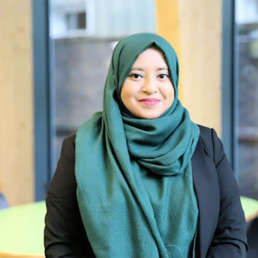
Written by Yamina Bibi
English Teacher and Assistant Headteacher
During the #WomenEd Global Unconference 2021, I spoke about how we can go about tackling our inner critic so that we can limit the influence of it on us as women.
I shared some specific strategies that have really helped me like labelling how I am feeling and seeking support from other women through coaching.
Despite presenting on this, I have really struggled this week to mute my unkind inner critic.
Having started as an AHT role in a new school this year, I have felt like a novice despite being a senior leader for a few years now. I guess in some ways I am because I am new to the system, rules and routines of the school. I know that it’s normal to feel this way but unfortunately this week I have been unable to soothe my inner critic, which tells me that I should be able to do this since I’ve done this job before. This negative self talk then creates a heaviness in my heart and mind and has even stopped me from sleeping well.
These are the unkind things that have played over and over again in my head:
‘You’ve been doing this for a while and you’re still not good.’
‘You can’t even teach properly so what makes you think you can lead?’
‘You were better as a classroom teacher instead of being SLT.’
Through coaching, I have been able to listen to this negative self talk and interrupt my tendency of letting it control me and all I do. I have learned to notice when I go from pressure to stress and acknowledge these thoughts and feelings. I have learned to notice when I am comparing myself to others and telling myself that I’m not good enough because they are better.
However, what I’ve really noticed is that when we’re on social media, it’s so easy to assume that everything and everyone else is doing better than us. It’s easy to believe that other teachers and leaders are superhuman experts who know all there is to know and can do everything and that, in comparison, we can’t do anything.
Let’s be honest. In schools, we are all working hard especially during these challenging times. We are all doing our best for our staff and students but no, we don’t know everything and it’s absolutely fine to say that.
As part of Resilient Leaders Elements™, we learn to share our strengths as well as our areas of development. I’ve been so afraid to do this in the past because I have feared that everyone would know what I knew about myself: I’m a fraud and failure. I now know that being open about my developmental needs with the people I trust and who support me does not make me a failure, it makes me an authentic leader.
Before RLE, I always thought I was an authentic leader but I realised that only allowing people to see my strengths and never sharing my struggles meant that others thought I was a superwoman. Maybe that’s what I wanted then but I definitely don’t want that anymore.
As leaders, we have a duty to model vulnerability and authenticity. True authentic leaders increase their leadership presence by modelling that we all have strengths and areas of development. In sharing this, hopefully others in our sphere of influence will do the same and then we can truly support them and their needs.
Alongside this, we must also pause, reflect and acknowledge our successes. Write it down, read it on paper and read it aloud to ourselves and others. What we are doing is so important and we cannot diminish that because our inner critic is telling us otherwise.
Let’s share all of who we are so that we can continue doing what we love without fear and that unkind inner critic holding us back.
Men, women and the rest of us: a brief guide to making university classrooms more accessible to trans and gender non-conforming students
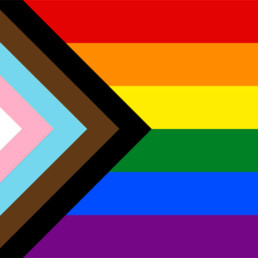
Written by Kit Heyam and Onni Gust
Onni Gust: Associate Professor of History, University of Nottingham. Author of Unhomely Empire: Whiteness and Belonging, c.1760-1830.Kit Heyam: Lecturer in Medieval and Early Modern Studies at Queen Mary, University of London, freelance trans awareness trainer, and queer public history activist.
This is a guide for academic teachers who want to get the best out of their trans and gender non-conforming students, and to ensure that they can fully participate in the classroom and in their studies.
1. Avoid making assumptions
Don’t assume you know a student’s gender based on body-type, voice or even dress. If they do disclose their trans status, don’t assume that they have or will undergo any form of medical transition; ask them how you can support them. All you really need to know is how to address them.
2. Names and pronouns are all you need
Names and pronouns are all you really need to know from your students. For trans and gender non-conforming students, the name, sex or title on their student record may be wrong. Using a student’s ‘old’ name may force them to come out, which can be incredibly distressing as well as violating the Equality Act. To avoid this:
Names:
- Instead of calling out the register, ask students to either write or say their names.
- Be up-front with students and ask them to see you, or email you, after class if for any reason their name has changed.
- Online platforms often automatically display names from University records. Familiarise yourself with your university’s name-changing processes – and if there aren’t any, insist that they be put in place.
Pronouns:
- Even if you think it’s obvious, explain to students how you like to be addressed. This models the process for all students and makes it much easier for trans and gender non-conforming students to state their own pronouns. Regardless of whether you’re trans or not, it also sends a powerful signal, showing you’re aware you can’t tell someone’s gender just from looking at them.
- If you ask students to introduce themselves to the class, give them the opportunity, but not the obligation, to include their pronouns.
- Gender-neutral pronouns, which some students will use, include the singular they/them/their; ze/hir/hirs; fae/faer/faers. The list is growing: if you’re unsure, ask the student to model the usage for you, or research it online.
- If you get a student’s pronoun wrong, apologise, correct yourself and move on.
3. What if other students constantly misgender a student in your class?
If a trans or gender non-conforming student brings this to your attention, it may be worth taking that student aside and talking to them. If, as a transgender teacher, I suspect that this is active transphobia, I would probably ask a cisgender colleague to intervene.
4. How else can I make learning more inclusive?
Consider your syllabus. It may be necessary to teach material that uses outdated/pejorative language, or ideas, about gender and sexuality (and/or race, class and disability). Flag up the problems, explain to your students why these texts are necessary to engage with, but make it clear that you do not support these ideas and that you invite critique.
Think about how you’ll manage any resulting questions or disagreements. How can you help your students to create a trans-inclusive seminar environment without making them feel overwhelmed, alienated or defensive?
5. Pastoral care for trans and gender non-conforming students
Awareness of trans and gender non-conforming identities is moving at a fast, but very uneven, pace. While your students will hopefully have support at home and at university, that’s still not the case for the majority. In a recent UCAS report, 17% of trans university applicants reported having had a bad experience at school or college, and trans applicants were less likely than LGB applicants to have good expectations for university. The report recommends that universities and colleges introduce bespoke resources to support trans students.
Trans people remain disproportionately affected by mental health problems.If your trans and gender non-conforming students disclose mental health problems to you, treat them as you would any other student, butbear in mind the following:
- Not enough counselors or GPs are trans-aware; some have been known to do more harm than good.
- Specialist gender services have waiting lists of over two years from referral by a GP.
If a student comes out to you as trans part-way through a semester:
- Think about your reaction: this is a vulnerable moment for the student. If you don’t understand something, ask politely and calmly for clarification.
- Don’t make any assumptions: trans people differ in their identities and their choices about social and/or medical transition.
- Let the student take the lead: support them if they want to come out to their class, but don’t force it.
Further resources:
For you:
UCAS, Next steps: What is the experience of LGBT+ students in education?
Equality Challenge Unit, Trans staff and students in HE and colleges: improving experiences
For trans and gender-nonconforming students:
GIRES (Gender Identity Research & Education Society – including a directory of support groups)

